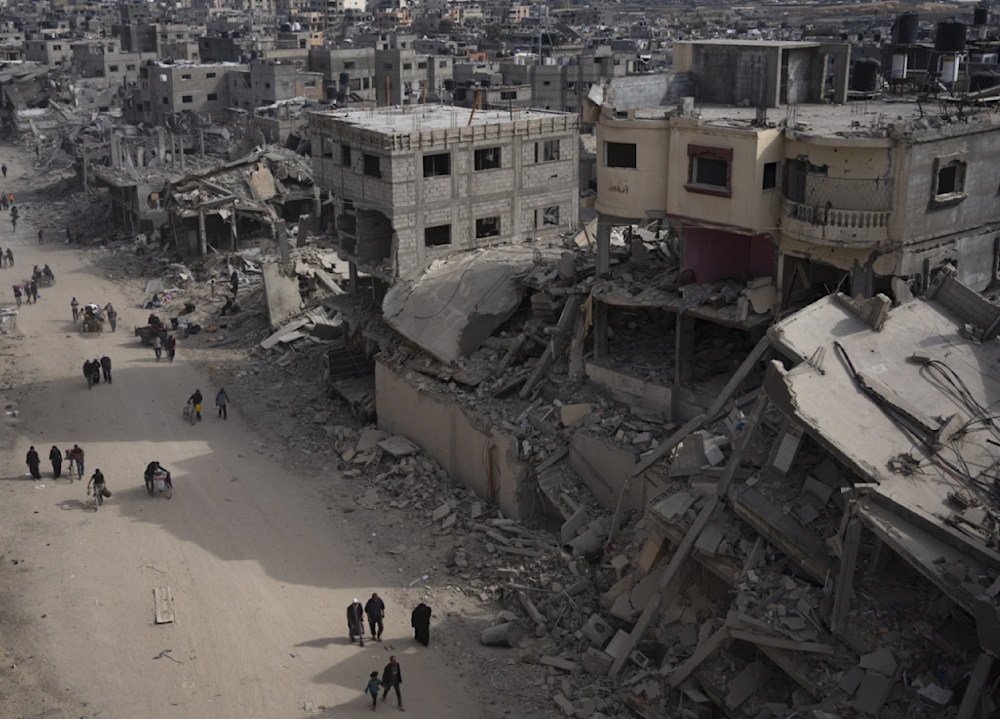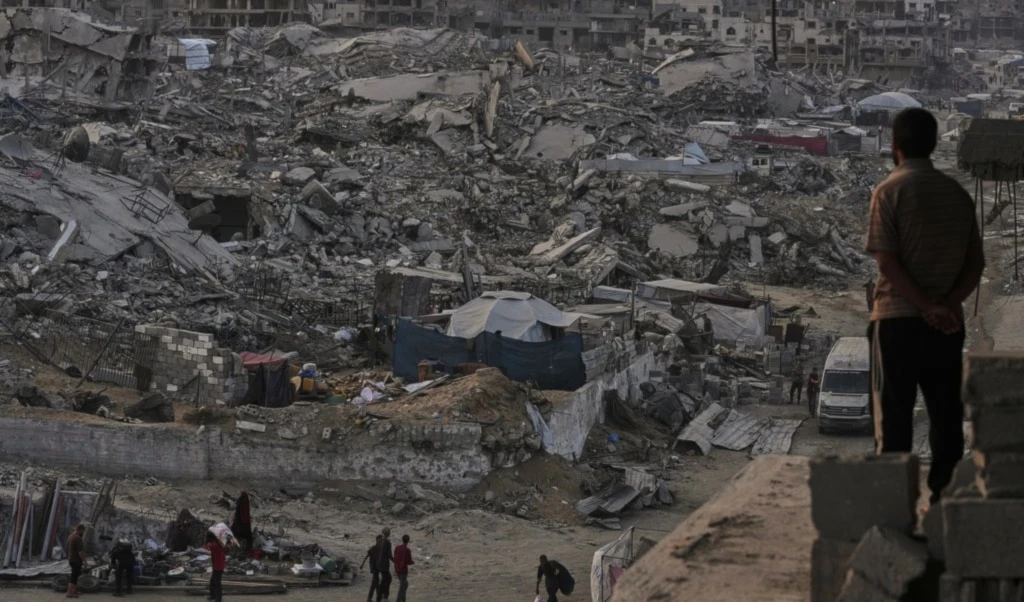70% of Gaza destroyed as 'Israel' shifts to bulldozer 'land clearing'
New satellite data reveal that nearly 70% of Gaza’s buildings have been levelled or severely damaged, evidence of a systematic demolition campaign.
-

Palestinians walk through the destruction in the wake of an Israeli air and ground offensive in Khan Younis in southern Gaza on April 8, 2024 (AP)
New satellite analysis by the Hebrew University’s Geographic Information System (GIS) Centre shows that nearly 70% of Gaza’s buildings have been destroyed or severely damaged, figures that now exceed earlier UN estimates. In Rafah, 89% of buildings have been damaged or destroyed, while northern Gaza stands at 84% and Gaza City at 78%.
“The residents of Gaza have nowhere to return to. The world they knew and their daily lives are simply gone,” said Adi Ben-Nun, the researcher behind the mapping, which illustrates widespread, systematic destruction of homes, public institutions, schools, hospitals, and farmland.
While "Israel’s" military campaign initially relied heavily on airstrikes, the latest phase has shifted to large-scale mechanical demolition, often conducted by private contractors under army protection. These contractors reportedly earn up to 5,000 shekels (about $1,500) per building and have urged military commanders to broaden demolition efforts.
Among them is reservist Rabbi Avraham Zarbiv, a D9 bulldozer operator, who has openly celebrated the devastation in an interview for Israeli newspaper Haaretz. “Rafah is being cleared today; there’s no Rafah," he said. "Northern Gaza is almost entirely levelled. Khan Yunis is next – it’ll be wiped out as well.”
He added that “God wants our job to be simply clearing the land.”
Read more: Gaza flattened for pay, not need: IOF reward operators for each ruin
A study by the Hebrew University estimates that around 160,000 buildings in Gaza, nearly 70% of its infrastructure, have been rendered uninhabitable or completely destroyed, far surpassing the UN’s April estimate of just over 50%.
Rubble in Gaza 14 times greater than all armed conflicts
According to the UN Satellite Centre, the weight of debris produced by this destruction has reached 50 million tonnes, an average of 137 kilograms per square metre across the entire Strip. The UN Environment Programme previously warned that the scale of rubble is 14 times greater than that produced by all armed conflicts worldwide since 2008. Clearing the debris, it projected, would take over two decades and cost $1.2 billion.
This destruction is no longer covert as Israeli Prime Minister Benjamin Netanyahu recently told the Knesset, “We are destroying more and more homes. They have nowhere to return to. The only expected outcome will be the desire of Gazans to emigrate out of the Strip.”
His remarks have drawn sharp scrutiny from legal experts and human rights observers, who argue that the policies in Gaza increasingly align with the legal definition of genocide. Article II(c) of the Genocide Convention includes “deliberately inflicting on the group conditions of life calculated to bring about its physical destruction in whole or in part.”
The mass leveling of cities, forced displacement, and systemic denial of shelter, education, and essential services are widely being cited as evidence that the ongoing campaign meets this threshold.

 3 Min Read
3 Min Read










